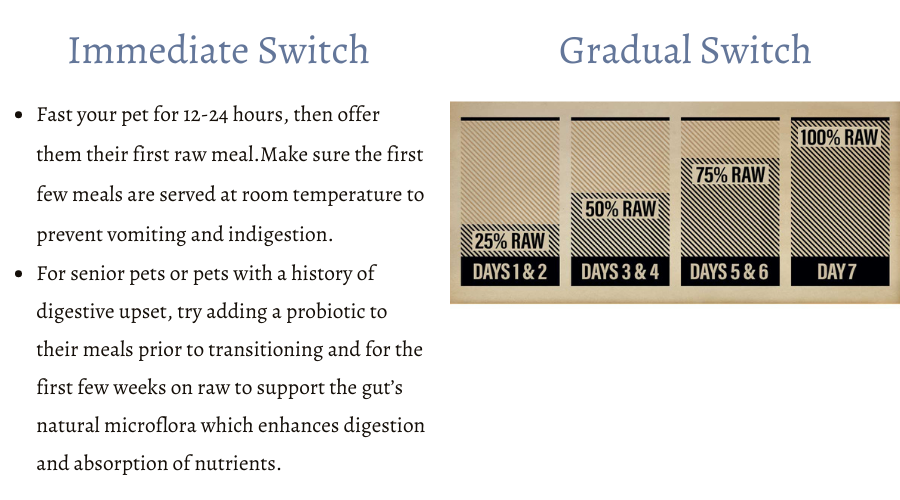Benefits of Raw Food

Transitioning to Raw Food
There are significant differences in the digestive process and speed of digestion between raw and dry kibble. Raw meat and bone digest quicker than processed foods that are high in carbohydrates and preservatives. You can try either one of two methods when you are transitioning your pet to raw food:

Source: Big Country Raw
Feeding Guidelines for Dogs
How much raw food you should feed your pet depends on your pet's age, activity level and weight. Puppies will need more food than adults until they are about 12 months old. Usually, a good rule of thumb is a ½ lb of food per 20 lbs of dog. If your dog needs to gain weight, add a ¼ lb of raw food per meal. If they need to lose weight, reduce by ¼ lb per meal.

Source: Iron Will Raw
Feeding Guidelines for Cats
For cats, we suggest feeding 2% to 3% of of their body weight per day.
For example:
6 lb cat x 2% body weight = 0.12lb of food per day.
Safe Handling
Store the raw food in the freezer until it is time to thaw. Storing your pet’s raw food in the freezer prevents bacteria growth. Avoid thawing, refreezing, and rethawing raw pet food as this practice can allow bacteria to develop.
Keep all unused portions in the fridge in a sealed container for up to 2-3 days and avoid leaving your pet’s raw food out for long periods of time, as this can allow bacteria to grow. If your pet doesn't eat it within 15 minutes, put the food in a glass tupperware and store in the fridge. Use stainless steel bowls for serving the food and utensils that are easy to disinfect, and make sure you wash all surfaces that come in contact with raw pet food with warm soapy water.
Source: Naturaw Canine


